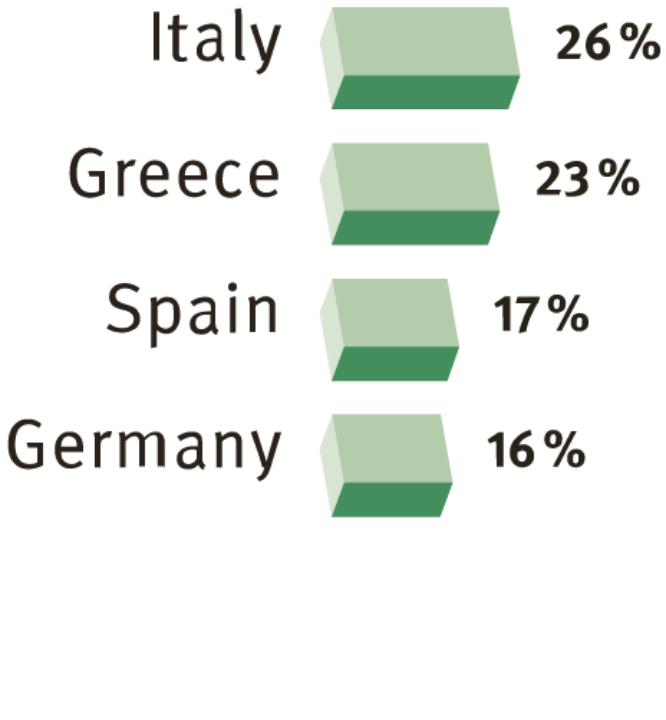
On the move
“Just go ahead and walk.” When explaining to tourists how to get around in the busy streets of Ho Chi Minh City Anh Nyguen always looks at incredulous faces. “Just go ahead and walk. At an even pace. The mopeds will get out of your way.” And he’s right, they do. Like the sea disappeared when Moses parted it, the flood of mopeds actually splits and makes room for the pedestrians. Nyguen adds a word of caution, though: “The trick only works with mopeds, not with cars.”
7.4 million two-wheeled vehicles are registered in Ho Chi Minh City, plus another million that are assumed to exist there – in a city of eight million people. The bikes shape the cityscape like no other means of transportation. And the former Saigon is no exception in that respect. Particularly in South East Asia, small motorbikes lend wings to people’s yen for personal mobility.
Nothing’s impossible
Especially visitors from western countries are always amazed about the miraculous transportation feats performed by these light vehicles. Be it in Jakarta, Hanoi, Bangkok, Kuala Lumpur or Pune, in any of these cities whole families can be seen on them buzzing through the streets, their smallest members crouched somewhere on the fuel tank between the handlebars and the seat. Kiosk owners stack cases of beer head-high behind their backs and two more between their legs. Construction teams arrive on “hybrids” which are a moped at the front and a pick-up at the rear, while others may hitch up a trailer jam-packed with goods and twice as large as the two-stroke vehicle that tows it.

India follows suit full-throttle
In India, 48,000 new two-wheelers are registered per day, totaling 17.7 million in 2016. As a result, the subcontinent has evolved into the world’s biggest moped market – even ranking ahead of China (16.8 million) and Indonesia (six million). And further growth is expected, as the “Times of India” reports. One reason is that the Indian government massively invests in rural infrastructure, which also fuels the rural population’s desire for personal mobility. Another reason is that upwardly mobile people who can afford a car will often buy an agile moped as a second vehicle allowing them to zip around the permanently congested city streets. As straightforward and affordable urban runabouts, the easy to handle motor scooters are not just popular with men, though. One in three customers of Honda, the leader in the Indian marketplace for scooters, is female.
135 m new motorbikes
were sold around the globe in 2016, which is about 50 percent more than cars and light trucks (88.1 million). Both are record numbers.
The flood of two-wheelers clattering through many metropolises in developing and threshold countries is a massive burden on the environment, especially as many of them are two-stroke polluters, which puts worry lines on the faces of mayors and their administrations. Vietnam’s capital, Hanoi – almost always on the brink of total traffic collapse like so many other megacities – is targeting 2030 as the year in which the flood of motorbikes will be banned from the city.
Causes, problems and solutions
As switching to cars is not a viable option, there’s actually just one which is: the development of a solid local transportation infrastructure. Though the lack of it – besides affordable purchasing prices and cost of ownership – is a major reason why the swarms of mini-motorized vehicles have grown into a plague in the first place.
In China, a second approach to resolving this issue has emerged: electric two-wheelers, from pedelecs through to motorcycles. In 2004, 40,000 of the small electric vehicles were sold in this huge country and currently 20 million are sold per year. For the classification of bikes, the 20/40 rule applies: Anything below 20 km/h (12.4 mph) and 40 kilos (88.2 lbs) is classified as a bicycle and may be operated without a registration and a license, albeit with the corresponding limitations. Everything above these ratings is considered a motorcycle requiring the respective permits.
Sharing makes scooters attractive in Europe as well
In response to air pollution, the Taiwanese company Gogoro has gotten an electrified scooter concept off the ground allowing batteries to be changed at respective stations: energy-to-go in a manner of speaking. Gogoro’s business model also includes the sharing principle, particularly in Europe. Following a successful launch in Berlin, the company is now targeting Paris. In addition to companies offering scooters with IC engines, there’s another competitor in the market of e-scooter sharing, Emmy, that intends to conquer urban areas as well. The growth rates in this sector suggest that others will follow. In China, Zeebike plans to roll out 100,000 rental scooters in 30 cities. The Spanish electric scooter company Scutum has found a strong partner in energy giant Repsol that has plans for activities in the sharing market as well. Repsol’s Electric Mobility Manager Carlos Bermúdez García has no doubts that acquiring a stake in Scutum has been a good investment: “All the studies show that this market is going to experience major growth in coming years.” Reason enough to keep an eye on this topic.

Mean machines & mild mopeds Households with motorized two-wheeled vehicles
North America


Latin America


Europe


Middle East


Africa


Asia-Pacific






